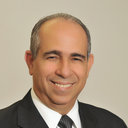Assessment of Myocardial Ischemia in Obese Individuals Undergoing Physical Stress Echocardiography (PSE).
Avainsanat
Abstrakti
BACKGROUND
Physical stress echocardiography is an established methodology for diagnosis and risk stratification of coronary artery disease in patients with physical capacity. In obese (body mass index ≥ 30 kg/m2) the usefulness of pharmacological stress echocardiography has been demonstrated; however, has not been reported the use of physical stress echocardiography in this growing population group.
OBJECTIVE
To assess the frequency of myocardial ischemia in obese and non-obese patients undergoing physical stress echocardiography and compare their clinical and echocardiographic differences.
METHODS
4,050 patients who underwent treadmill physical stress echocardiography were studied according to the Bruce protocol, divided into two groups: obese (n = 945; 23.3%) and non-obese (n = 3,105; 76.6%).
RESULTS
There was no difference regarding gender. Obese patients were younger (55.4 ± 10.9 vs. 57.56 ± 11.67) and had a higher frequency of hypertension (75.2% vs. 57, 2%; p < 0.0001), diabetis mellitus (15.2% vs. 10.9%; p < 0.0001), dyslipidemia (59.5% vs 51.9%; p < 0.0001), family history of coronary artery disease (59.3% vs. 55.1%; p = 0.023) and physical inactivity (71.4% vs. 52.9%, p < 0.0001). The obese had greater aortic dimensions (3.27 vs. 3.14 cm; p < 0.0001), left atrium (3.97 vs. 3.72 cm; p < 0.0001) and the relative thickness of the ventricule (33.7 vs. 32.8 cm; p < 0.0001). Regarding the presence of myocardial ischemia, there was no difference between groups (19% vs. 17.9%; p = 0.41). In adjusted logistic regression, the presence of myocardial ischemia remained independently associated with age, female gender, diabetes and hypertension.
CONCLUSIONS
Obesity did not behave as a predictor of the presence of ischemia and the physical stress echocardiography. The application of this assessment tool in large scale sample demonstrates the feasibility of the methodology, also in obese.



